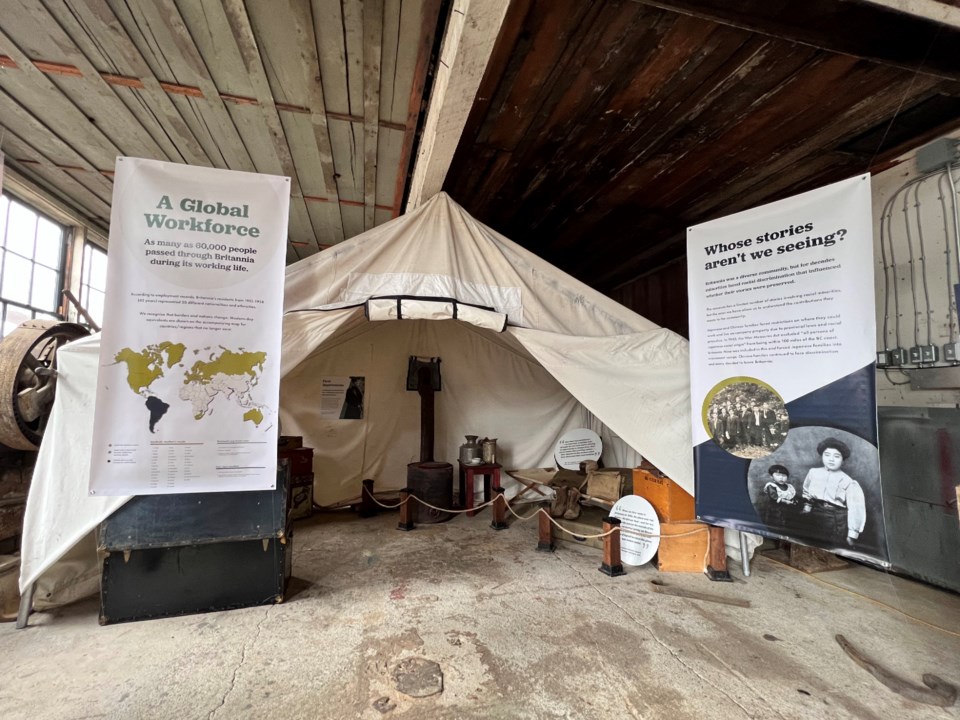It’s the early 1930s and there’s substantial movement in the mines.
There’s talk of gold, copper and other precious gems to be pulled from inside. Thankfully, there is no dragon named Smaug hoarding over the bounty.
You’d almost think we took that scenario straight from J.R.R. Tolkien’s study as he wrote the iconic tale The Hobbit. Those parallels, however, are very much in play in southwest B.C. rather than in the fictional setting within Middle Earth.
The Britannia Mine Museum is a veritable treasure trove of interactive experiences that appeal to all five senses, ages, and interests. An award-winning National Historic Site lying between Vancouver and Squamish on the Sea to Sky Highway, the museum opens up a little-seen world that turns out awe-inspiring sights and memorable family experiences.
And like the dwarves in Middle Earth, you most certainly can pan for gold – without the ever-looming threat of orcs and dragons.
“I think many people come and expect that they’ll get to walk by some buildings and have it be a really passive outing, but what excites me about this site is that coming to see us is a really active experience,” says Derek Jang, the museum’s manager of interpretive delivery.
“The photography is unbelievable. The views from inside the historic mine tunnel, which you get to visit on our tour, and especially from inside the mill building, are like stepping into another world.”
With museum staff expecting record-setting attendance numbers this summer, a pair of marquee exhibits will transport visitors back to the mine’s heyday in the 1920s and ’30s.
Running until September 5, the “More than a Mine: Recreation in a Mining Town” exhibit showcases the two mining communities, Mount Sheer Townsite and Britannia Beach.
The life-sized time capsule in the Machine Shop features re-creations of how Britannia residents enjoyed various social and recreational activities. It’s a fully immersive experience that includes a mock mining tent, a mini cabin highlighting the differences between life at the “Town Site” and “The Beach,” a Copper Queen throne, a baseball diamond, basketball court and even a full-size diving board with artifacts and displays.
Drawn from the museum’s historic collection and archives, the exhibit showcases previously unseen objects, photographs, and films that highlight the wholesome, unique community culture and traditions that strengthened the remote towns and made Britannia an enjoyable place to live.
One of the exhibit’s many conversation starters is a receipt for baseballs purchased in 1920. When the amount is converted to today’s currency and value, a staggering $13,000 was spent on baseballs that year alone. As Jang explains, getting those baseballs to a rocky outpost in the middle of the high country was not an easy job.
“Our new curatorial team has been really diving into those archives, finding ways to bring the feeling of that town to life,” Jang describes. “One of the goals that they set for this space was that every photograph would be something that people have never seen during the museum’s timeframe.”
The other showstopper, known as BOOM!, typifies the museum’s ability to speak and appeal to all the senses. Picture it as a live-action, multi-sensory special effects story-telling experience that brings the historic Mill building roaring back to life.
“BOOM! is a slice of a giant theme park experience placed in little old Britannia Beach,” Jang says. “I think it really has to be seen to be believed and does a really great job of using special effects and historical interpretation to bring back what it must have felt like to work inside the historic Mill building.”
More than 60,000 people and families from more than 50 countries worked and lived at the Britannia Mining site during operations from 1904 to 1974. About one-third of the world’s copper was extracted from the Britannia site at the height of its operation in the late 1920s and early 1930s.
“I think Britannia is quite a rarity in that a lot of Canada’s industrial history has not been tremendously well preserved,” Jang states. “Luckily, partly because of that tight-knit community feel, the buildings that are standing today really do allow people to immerse themselves in this world in a way that’s not often possible.”
To learn more, or book a visit, visit britanniaminemuseum.ca.



